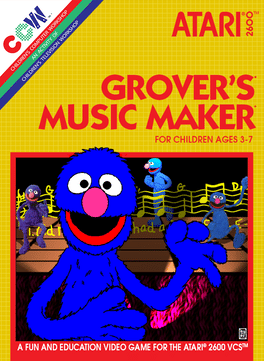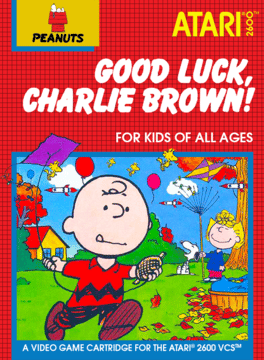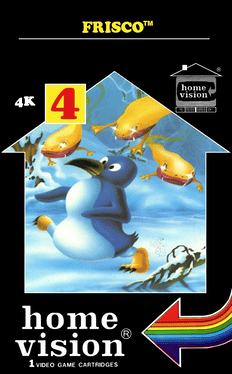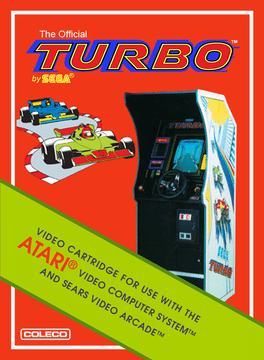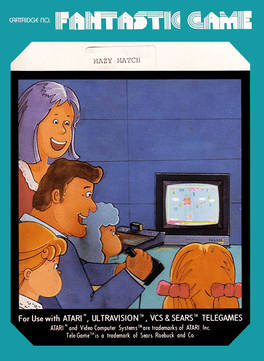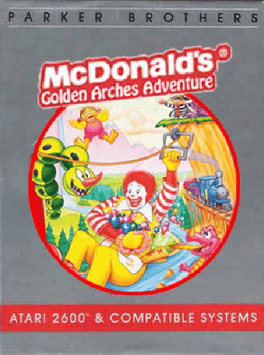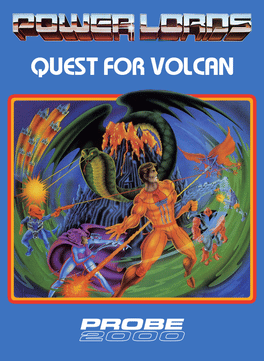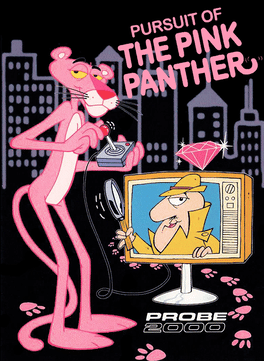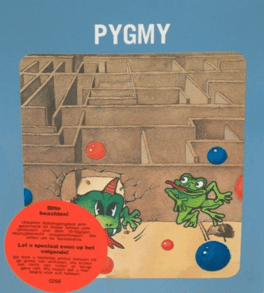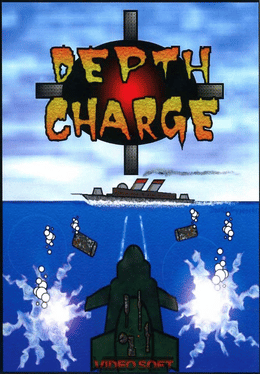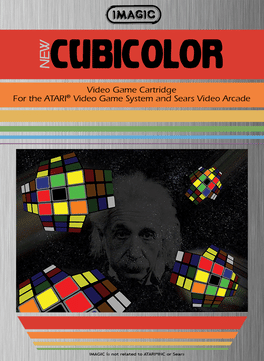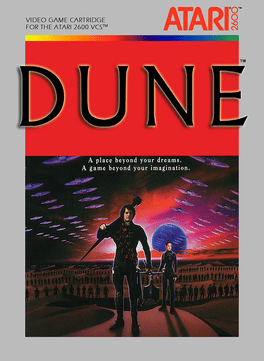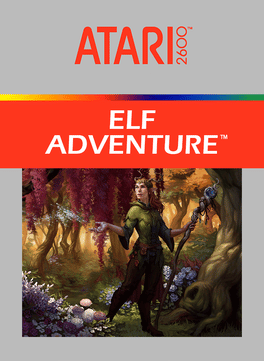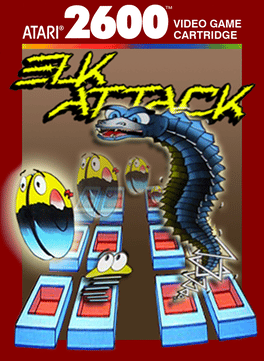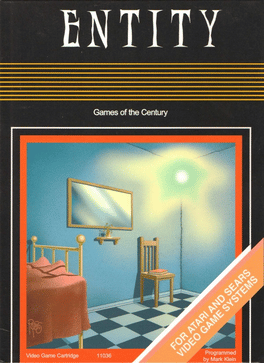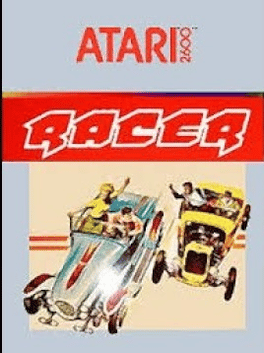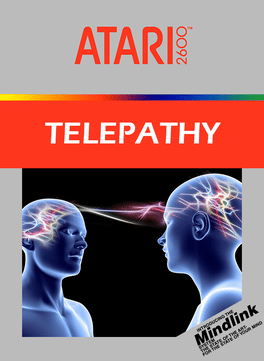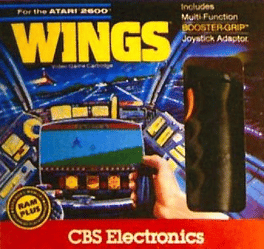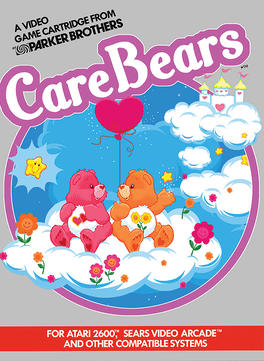Newest Atari 2600 Games - Page 31
-
Grover's Music Maker
Grover's Music Maker was originally called Monkey Music and featured a dancing monkey instead of Grover. Grover's Music Maker was an attempt by Atari to introduce children to the music through some well known (and some not so well known) children's tunes. Selecting one of the twenty letters (A -T), will cause Grover to start jumping around while some music is played in the background. It's unknown why the game got canned, but it may be due to Atari pulling the plug on the 2600 Children's series after its less than stellar performance. Other reasons may have been poor beta testing results or limited long term playability. -
Good Luck, Charlie Brown!
Good Luck, Charlie Brown should have been the last of the Children's Work Shop releases, but never saw the light of day. Although the game was found a long time ago, the rom had not been dumped until quite recently so the game is still a bit of a mystery. The only known version is very incomplete with little gameplay implemented, but rumors persist of a far more complete version in existence. The game only consists of one screen in which you control Charlie Brown as he flies his kite around the screen. At the bottom of the screen there's a wind gauge which shows the speed and direction of the wind. There's also a timer a the bottom of the screen which slowly counts up which may be part of the scoring system (based on total time instead of score). You goal is to fly your kite as long as possible while avoiding birds, balloons, rockets, and of course the deadly Kite Eating Tree. According to the catalog description, if Charlie Brown lost his kite he would have to earn another chance by raking leaves (what fun!). Obvi -
Frisco
Frisco is an action game, published by Homevision, which was cancelled before it was released. -
Turbo
Based on the 1981 Sega coin-op of the same name, Turbo is one of those prototypes that everyone was sure existed somewhere (it was shown at the 1983 CES once), but never seemed to show up. Thankfully all this changed when former Atari 2600 programmer Anthony Henderson happened to stumble across his long lost copy of Turbo while searching his attic. According the programmer, Coleco originally wanted the game to use paddle controllers in order to better simulate a steering wheel. However reading the input from paddle controllers takes up considerably more clock cycles than reading regular joysticks, and there was not enough time to animate the road edges. After pleading with Coleco, they were allowed switch the game from using paddles to joysticks, which freed up enough time to insert the road edge movement but the game was cancelled before it was actually implemented. Other missing features include the ambulance, water puddles, and the enemy car AI (although implemented in the current prototype, it was never tweaked -
Mazy Match
Try to reach the symbols at the top of the screen before you run out of energy by walking an invisible path on a randomly generated grid while avoiding UFO's and rocks dropped by birds. You can choose a new path at the bottom of the screen. Reaching a Minus: You loose 300 points. Return to the beginning of your chosen path to get new energy. Reaching a Plus: You gain 1000 points. Return to the beginning of your chosen path to get new energy. The flashing UFO's can be destroyed (500 points) by touching them. Reaching a Sword: You gain 500 points. The grid becomes invisible and all paths are walkable now. Return to the bottom of the screen to get new energy. The flashing UFO's can be destroyed (500 points) by touching them. When you get hit by a non-flashing UFO, you will loose 1 life. When you run out of energy, you will loose 1 life. Sometimes the paths change position and you will fall off and loose 1 life. Sometimes you can teleport from one vertical path to another. The game has a 2 player mode and 8 difficulty -
McDonald's: Golden Arches Adventure
The existing prototype uses the Tutankham game code. As such, PARKERBROS 83DAVEENGMAN can be found at the very end of the compiled code listing, along with a few of the Tutankham explorer graphics. Also, the characters 0123456789, ABCDEFTWV, and PLAY are in the code. Although McDonald's is far from finished, the game's designer Isabel Garret was able to give us the details on how the game would have been played: 'You are Ronald McDonald flying in your spaceship. Hungry aliens are descending on the Golden Arches below to eat them. You must fly down to the ground and pick up McDonald's food to bring up and feed the aliens, but certain aliens will only eat certain McDonald's fast food (shakes, fries, hamburgers) so you need to feed them the right food. If you don't feed them in time, they start to eat the Golden Arches, but not to worry, you can fly back down to the ground and pick up pieces to rebuild the Golden Arches'. -
Power Lords: Quest for Volcan
'Adam, Leader of the Lords, and Shaya, Queen of Power, are extra-terrestrial warriors who battle deadly aliens on the mystical Volcan Rock. Using lasers to fight the alien space serpent, the Power Lords can gain entry into the rock and search its endless chambers for the glowing touchstone that activates powerful anti-alien weapons and devices.' Power Lords was based on the 1983 toy line of the same name. North American Phillips (NAP) must have thought that it was going to be a huge hit, because games were developed for the Atari 2600, Colecovision and Odyssey 2. Of these games only the Odyssey 2 version was released and is considered to be the rarest US released game for the system. All three versions play similarly, but the Atari 2600 and Colecovision versions have an additional stage which makes the game slightly more interesting. Like the other versions, the 2600 version of Power Lords is not all that fun to play and the overall difficulty of the game is also rather high. Had Power Lords been released, it prob -
Pursuit of the Pink Panther
Pursuit of the Pink Panther was based off the famous cartoon series and inspired by the Pink Panther movies starring Peter Sellers as inspector Clouseau. This game actually started out life as Trail of the Pink Panther by U.S. Games (based on the then current movie), but when U.S. Games went out of business they sold the rights to North American Phillips (NAP) who decided to release their own version of the game through their Probe 2000 division. It is unknown if any work was already done on the U.S. Games version or if any of those ideas were used in the Probe 2000 version of the game. Although Pursuit of the Pink Panther was heavily marketed at the June 1983 CES, it was never released, most probably because the special RAM/ROM chip that NAP used to squeeze all the graphics and gameplay elements into the game couldn't be reliably manufactured. When the first batch of chips came back defective from the manufacturer NAP decided to cancel the game rather than try and find a new source for the chips. The crumbling gam -
Pygmy
Embark on a riveting pixelated adventure with Pygmy, an Atari 2600 game that transports you to a world of tiny wonders! As a courageous pygmy explorer, navigate treacherous landscapes, battle inventive enemies, and solve mind-bending puzzles to uncover ancient secrets. With its charmingly simplistic graphics and addictive gameplay, Pygmy invites you to rediscover the joy of classic gaming. So grab your joystick and prepare for a pint-sized journey like no other! -
Planet of the Apes
You play the role Col. George Taylor (who looks a bit like Pitfall Harry's long lost brother). Your mission is to guide Col. Taylor through a series of screens as he avoids an army of apes and makes his way towards the Forbidden Zone. There are three different kinds of apes in this game, and they all move in a straight line across the screen from right to left. For years Planet of the Apes had been misidentified as another 20th Century Fox prototype called Alligator People. This was because the first Planet of the Apes prototype was found in case labeled Alligator People and since no screenshots of either game existed, there was no reason to doubt the name on the label. However, after much research it was discovered that this game was in fact really John Marvin's lost Planet of the Apes game. It's obvious that Planet of the Apes still had some work to be done, but was finished enough to go through initial play testing. However, before programmer John Marvin could finish it, he left 20th Century Fox to go work for E -
Depth Charge
Planned as a pack-in cassette title for Amiga's never released Power Module peripheral and described as 'the first machine-interactive video game', offering head-to-head play, with one player the submarine commander and the other the destroyer captain. Each player would have had their own screen display and set of commands. The Power Module was dropped in favor of the Power Play Arcade carts, and the game’s development only went as far as this version. Catalog description: 'You know he's down there. But where? Your sonar is picking up indiscriminate blips. Then a pattern emerges. You've found him. You launch a round of depth charges over the side, and the explosions rock the ship. You smile confidently and check the scanner: completely blank. Suddenly, there's a blip. And another. Or... You know he's up there. But where...' The cart, box and manual are reproductions from 2010 with permission of Jerry Lawson. -
Cubicolor
You know those cheap little tile puzzles, where you shift tiles one space at a time to try to reform a picture that has been mixed up? That's what this game is like. Move the tiles on the big square (5x5) one at a time, and try to form the pattern shown on one of the little squares (3x3) within the middle 9 tiles of the big square. The game is set up with two big squares for grueling two-player competition. Cubicolor was designed by Rob Fulop of Imagic fame. Supposedly, only 50 were produced, and each cartridge is numbered. The rarity and legend of this game make it potentially the most sought-after 2600 game in existence. -
Dune
Based off the 1984 movie, Dune was to be an action/adventure game along the same lines the classic 2600 game Adventure. Dune was originally started by veteran programmers Bruce Poehlman and Gary Stark before they began working on the 5200 game "The Last Starfighter" (which also went unreleased). Unfortunately Gary and Bruce had only gone through the brainstorming process when work was stopped. However it appears that another programmer may have been assigned to pick up and continue work on Dune. Unfortunately only preliminary coding had been started before Jack Tramiel shut down 2600 game development and fired most of the staff. -
Elf Adventure
A sequel to Adventure? Yes it appears that Warren was tinkering with a sequel to his smash hit Adventure in his spare time while working at The Learning Company which he founded in 1980 after leaving Atari. It’s unknown if Atari actually ordered a sequel or if Warren was doing this on his own and hoping to sell it to Atari. However since Atari was considering calling "SwordQuest: Earthworld" Adventure II (and "Fireworld" Adventure III) the later scenario sounds more plausible. Either way, this prototype has an air of mystery about it. -
Elk Attack
Silly name aside, Elk Attack is really a Pac-Man type game but without a maze. You control a Yo-Yo type machine, which must use its string to latch onto and destroy all the colored blocks on the screen. Along the way you'll encounter strange worm like creatures, which will attempt to disrupt your Yo-Yo. To help you fight the worms there are power squares scattered around the board which when grabbed will render your Yo-Yo temporarily invincible and increase your speed. However unlike Pac-Man touching a worm while invincible will only net you points, and will not destroy of them. Because of this its best to just go about your business and clear the maze instead of hunting down the worms. Elk Attack is a port of the obscure Taito arcade game Electric Yo-Yo! Programmer Mark Hahn named the game Elk Attack as a joke, and probably would have changed the name had it been published. The game was left in its current state. The following is hidden in the code: ELK ATTACK (c) 1987 Mark R. Hahn -
Entity
The Entity is an unreleased 20th Century Fox game based on a horror movie sharing the same name. It's odd that Fox decided to go forward with this project, given the movie's adult themes. This could very well be why Fox didn't release the game, although the game itself has little in common with the movie's subject matter. The Entity was programmed by Mark Kline, who was responsible for two other unreleased Fox games, Pick Up and Look Ahead. The cart, box and manual are reproductions from 2003 with permission of programmer Mark Klein. -
Telepathy
Telepathy is one of two known prototype games that were developed for Atari's failed Mindlink controller. The Mindlink was a headband that player wore on his head and plugged into the joystick port. The idea was that the Mindlink's sensors would pick up any facial movements or muscle twitches the player would make. Atari actually claimed that the Mindlink could read the player's thoughts. The problem was that the Mindlink didn't work very well in initial test runs, and even when it did work players would complain of headaches and dizziness from twitching their face all day. After disappointing test results, the Mindlink controller was wisely canceled. Telepathy was actually developed as a demo to show what kind games the Mindlink could do. This "demo" is made up of seven different action screens held together by a loose "mine" theme. Thankfully Telepathy is playable without the Mindlink controller (unlike Bionic Breakthrough) by pressing the joystick button. It's unknown if Atari was thinking of releasing Telepathy -
Wings
Wings is an unreleased game developed by CBS Electronics and programmed by Stuart Ross. Wings is an air combat simulation that uses a control scheme of two joysticks. The first joystick controls your plane and the second controls access to your weapons. It was originally assumed the game would use the CBS Booster Grip controller, due to a prototype box that shows Wings packaged with the controller. Wings features a fairly sophisticated control panel (for a 2600 game), containing seven different gauges that let you keep tabs on your fuel, power, airspeed, altitude, radar, horizon, and compass. Two different versions of the prototype binary exist, one NTSC and one PAL. The NTSC version of the game is dated four months earlier than the PAL version, and is noticeably different. The NTSC version is playable, but is missing the enemy planes and has numerous bugs. The PAL version is more complete, featuring a nice Wings logo and enemy planes, but also contains a bug that causes the game to crash if you continually pull ba -
Care Bears
The game concept in Care Bears revolves around grabbing the "Tummy Icon" from each of the Care Bears as they slowly fell down the screen. Once all the icons were collected the player would have to arrange them in a certain order before time ran out. Although this may sound rather easy, one has to keep in mind that the game was geared toward young children, so things had to be kept simplistic. Care Bears made it to the beta testing stage before the marketing department decided to stop work on the game citing that the market for childrens games was diminishing, and the gameplay was too dull. Therefore it was decided that all further development on the game was to be stopped. According to programmer Laura Nikolich, part of the reason Care Bears was killed off, was that the marketing department really didn't know what they wanted. The Care Bears product line was aimed at the 8 and under age group, but marketing wanted a more action oriented game designed for older kids. Although Nikolich described the game as being alm
